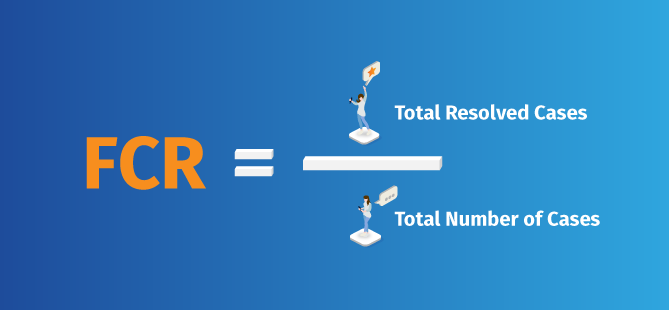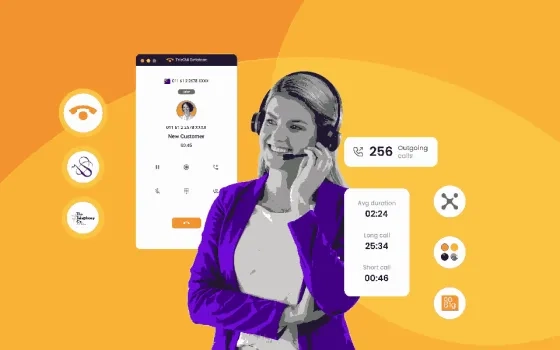“A happy and satisfied customer transformed into a loyal customer”
Who is a customer?
A customer is the recipient of a product, service, goods or data. It can be an individual, group of individuals or an organization. We often confuse between a customer and a consumer and term them the same; but, a customer and a consumer are not strictly the same in marketing terminology. A customer is an individual or an organization who purchases the product or service but a consumer is one who uses it, it is based on consumption.
Let me drive this with an example. A school or edtech company has students as consumers and the parents are its customers.
Who is your customer?
Many organizations make mistakes on customer recognition. They seldom select internal and external customers like employees, buyers, distributors, contractors in this group and give them equal priority. This results in focusing time and energy in wrong places which restrains company’s ability to grow and prosper. Thus while deciding who is a customer, focus should always be on the people or the organization who is using the product or the service. They are the ones for whom market and product exist and value being created.
Now a tricky situation arises, when a company sells its product as a raw material to another company. In this case, the primary customer is the designer of the product who is hiring or buying a product to deliver a specific function. More value can be created for designers if the company recognizes their customer. More the knowledge of end users job, merrier the avenue of growth which is worth pursuing when it comes to customer selection. So the first step towards profiting from customers is to know who they are and extend focus on them.
What is customer experience?
Customer experience is the perception or impression of the customer about the product or the organization throughout the journey. It is the resultant view of the brand and factors that include revenue.
The two basic touchpoint of customer experience are people and product
- Are you really satisfied by the performance of the product?
- Are you overwhelmed by the attention extended by a customer support executive to solve the problem?
These are factors that that play a crucial part in creating a great customer experience.
Why is customer experience important for a business?
In today’s competitive market, it is the customer who has all the power and not the seller. Customers have plenty of options to choose from at the click of a button and make purchases on their own. Thus, it is so important to provide the best experience and persuade them to continue business with you. They are the best advertising and marketing resources for brand awareness
IMPORTANCE OF CUSTOMER EXPERIENCE MEASURE
The need to measure customer experience is to have a better understanding of what you have done well and where there is room for improvement.
Measuring customer experience is not an added benefit; in fact, it is a necessity in today’s competitive world. It helps an organization to collect and analyze data to get a better overview of the customer and their needs. Measuring customer experience helps organizations to proactively know the customer satisfaction and dissatisfaction levels and thereby work on improvement on customer experience.
How to measure customer experience?
- Know your customer
To start with, it is very important to know your customer, their needs, expectations and things that can retain them.
- Identify pain points and then rate and identify reasons for customer churn
Churn is a part of business. No matter the amount of effort one puts, there can never be a 100% success rate or retention of customers. At some point of time there might be some mistakes which eventually can create a customer to leave, but it is important to learn from mistakes so that one can prevent it from happening in the future. So it is of utmost importance to do regular analysis of churned customers to determine whether the rate is increasing or decreasing, reason and action to prevent it from further happening.
- Know your customer journey
Your customer journey started before she became your customer. It is from the time she visited your website and liked your social media post. To ensure that the journey is creating positive experience it is important to know the customer journey. An Omnichannel customer experience platform can providing the visualisation of customer journey and how is her experience during every interaction. The power of customer journey analytics provides a good insight to the level of customer experience.
Choosing right customer metrics to measure
Now that customers pain points are identified and focus is being made on their key pain areas- it is time to start measuring results with the help of analyzing the business metrics.
Primary goal here is to check if the solutions for the pain points that have been provided are working or not and how those can be further improved. If they don’t work, maybe there is something else that may do the trick. Data of different metrics must be collected through appropriate data collection methodology on a regular basis. It will help to set a target for each customer experience metrics and continuous improvement of the organization’s customer experience quality.
It is important to realise that customer experience is an aggregate of all the interactions a customer has with a brand whereas customer satisfaction is usually with a specific interaction. So, customer experience is a journey whereas customer satisfaction is the different milestone in that journey!
Listed below are some metrics that helps in measuring customer satisfaction and customer experience:-
Net promoter score(NPS)- A great way to measure customer experience is through NPS. It is an index which shows how willingly a customer can promote your brand to friends, family or colleagues based on their experience with the brand. NPS data depicts an aggregate experience across teams as multiple teams are engaged for a building a lasting customer experience. Analyzing NPS data across the customer journey will tell you where you did excellence on customer experience and where you need to improve. With NPS score, you can analyze team to team performance to ensure overall customer satisfaction across the board. You can follow up customer feedback irrespective of positive or negative, deepen your relationship which ensures customer retention and loyalty.

Average Handling Time(AHT)/First Response Time(FRT)- It is always difficult to measure and analyze customer support team’s performance. Quality of interactions between two individuals is subjective, whereas. Interaction with customer are the ultimate source of customer experience. Fortunately, there are many built-in tracking tools available which help to measure key data. One of the most important tools is the first response rate.
What is the First Response Rate?
It is the metric which determines how quickly and accurately the information or resolution is provided by the customer support team. AHT is the average time taken to respond to the query. Quick responses help higher customer satisfaction. According to research, 75% of customers want a firsthand response within a span of 5 minutes.
It is important to note that in many cases performance is measured through the time taken to give resolution and these two metrics are not the same. First response rate is the measurement of average time taken by a customer support executive to answer a customer, which is the first step in the process of finding a solution. Once the agent starts a conversation, h/she needs to listen to the customer carefully, understand the issue, determine or offer an appropriate course of action and follow accordingly. The total time taken to move through all steps is to be considered in calculating the resolution.
Why is the first response rate important?
There are quite a few metrics that can help to measure customer support performance but why is the first response rate so important? The answer lies in the fact that it plays a significant role in customer experience.
The lower the first response rate, the better is the customer experience as the customer do not have to wait longer for her issue to get resolved. It will not only reflect on the performance of the customer support team but also the organization as a whole.
First Contact Resolution(FCR)- it is the measurement which tells how well the technical team can solve customer issues first hand with the help of statistical analysis. If the issue is not resolved the first time, the customer will again initiate contact. It is likely that customer experience won’t be satisfactory and thus the customer won’t stay put for long.
Why is FCR critical?
FCR is important for two reasons. First, it is the key factor of customer satisfaction which should be measured, High FCR is directly proportional to good customer experience. It can be measured by taking into consideration the amount of time an agent spends with a customer during a call. Secondly, FCR rates determines support staffing, Low FCR Rate means more follow-up calls needed to address a customer issue, hence it requires more support staff. While high FCR rates indicates that customer needs are properly addressed on first time thus reducing the need for support staff to follow up with a second contact. The FCR can also indicate how well your support staffs are trained and skilled to handle customers with utmost proficiency.

Source: Hitachi Solutions
Improvement of FCR
Now that you measured your FCR and you are not happy with it neither your customers are happy with you, you need to improve your FCR rate.
How do you do it?
Upgrade skills of your tier 1 support:
When a tier 1 (Level 1) support agent escalates certain issues to tier 2 (Level 2) support, it will increase the time to resolve the issue. So upgrading or providing adequate skill to tier 1 support will help them resolve issues at their end. The more tickets tier 1 agents can solve on their own, the more number of issues will get solved on first contact.
Knowledge base materials:
The main reason behind the escalation of an issue is lack of knowledge or training of a tier 1 support that restrains them to resolve the issue. If an organization gives easy access to knowledge base information, it can help them to learn and deter from further escalation.
Automation:
To obtain better efficiency of the support team, it is the best practice to automate repetitive tasks which then save time and energy.
Improve the process:
Analyze tickets to determine customers' common pain area, where things are going wrong, and how to fix it. Elimination of issues improves FCR rates, It also reduces call volume - something that both customer and employee will cheer for.
Customer Satisfaction Score(CSAT)- CSAT is the average score given by a customer on the basis of a survey/questionnaire answered by the customer just after resolving an issue. Companies can use CSAT scores to evaluate customer experience on products and services. It is a loyalty metric used by organizations to find out customer experience. It is one of the three popular metrics which determines customer loyalty along with Net Promoter Score (NPS) and Customer Effort Score (CES). However, there are some flaws related to it. One such flaw is that CSAT score is the satisfaction level of that particular interaction and not overall satisfaction or happiness level of the customer. It is also a KPI of the customer service executive in dealing with the customer. So companies which rely only on their CSAT scores often get disappointed. On the other hand, when CSAT is measured properly it can give a clear picture of customer retention.
How does it work?
CSAT comprises of a set of questions which is then asked to customers for their evaluation on certain task or action, products, interaction with customer support etc. The answer can vary from “very satisfied” to “very unsatisfied” range. It can also be rated on a scale of 1-5 or 1-10. CSAT scores are evaluated in percentage 0% to 100%. Suppose 100 people are evaluated and 50 are in a satisfied range, which means the organization has a 50% customer satisfaction rate.
Customer Effort Scores(CES)- It is the score that shows the amount of effort the customer made to reach out to the customer service agent and execute a particular task. It should be as easy as possible to complete a task as customers are giving out their time. So it should be least complicated to engage the customer and enhance customer experience. The idea behind this survey is to find customer’s experience on performing certain actions through interaction with the organization and take action accordingly.
CES survey is normally executed:
Right after interaction with the customer support team. Interaction with a product/service or a purchase/subscription. When there is a business requirement to measure customer experience with product/service.
How does it work?
CES survey consists of a single question of how easy or difficult it was to perform certain set of actions like reaching out to customer support or resolve an issue, getting a demo or leaving a review. It may vary from “very easy” to “very difficult” range or “strongly agree” to “strongly disagree” category. The collected customer data is then analyzed to find the customer experience. If most replies come positive, meaning higher customer satisfaction and vice versa.
Analyze Ticket Trend(ATT)- Tickets are being generated based on issues registered by customers and assigned to the technical team to resolve the issue. Now if there are recurrences of issues and ticket generation, it is time to review the possible reasons for those recurrences and provide necessary solutions. This will reduce the number of tickets and provide an enjoyable customer experience.

Source: Human Resources Management
How to create a great customer experience?
“Customer service is the new marketing”
~Derek Sivers, CD Baby
Three Es- Empathy, Ease and Employees; The three ingredients for a great customer experience.
- Be empathetic: it takes to put oneself into a customer's shoes and understand their woes, issues and situations. Heatmaps help to understand visitors drop out or stay on a site and then A/B test to understand what makes the customer stay. This is a genuine approach to understand customer experience. Without empathy, a business house cannot build a product or provide solutions. Empathy helps to make a product/service stand out amid tough competition.
“70% of buying decisions are based on how customers feel they are being treated”
~Simon Sinek(author, Start with Why)
The customer facing team – sales, service or support should display higher level of empathy instead of providing scripted response. Your customer wants to be heard – that is the starting point of creating a good customer experience.
- Ease the problem:
Faster resolution of problems using technology is the next step to help customers reach their goals. E-commerce businesses must ensure a customer friendly portal, fast page load, well stocked inventory and easy checkout. In SaaS business, easy access to customer support, product customization demos and fast response time to customer queries is salient. A happy customer will share good experiences with his/her friends, relatives and colleagues, whereas if experience goes wrong, unhappy customers will share their woes with double the number of people. This is why organizations are quick to handle customer complaints on social media platforms like twitter. For every customer who complains, there are possibilities that 26 customers will turn away from your product/service without uttering a single word. You may get business from happy customers but you will never know the reason behind those 26 customers’ disapprovals who isolated themselves from your product/service.
- Employee experience is as important as customer experience.
Last but not the least, employee experience is a vital part of the organization. A fun loving, happy, motivated, skill and merit based work culture always pays off with greater results with customers. On the other hand, if the company doesn’t treat the employees with care and respect, they will eventually grow frustrated and demotivated which will reflect on their behavior and work which in turn will cause the customers to suffer in the long run. A great EX leads to a great CX.
“Always treat your employees exactly as you want to treat your best customers. You can buy a person’s hand but you cannot buy his heart, his heart is where his enthusiasm is. Treat employees as volunteers just as you treat customers as volunteers, because that’s what they are. They volunteer the best parts- their hearts and minds”
~ Stephen Covey(Author, Seven Habits Of Highly Effective People)




















